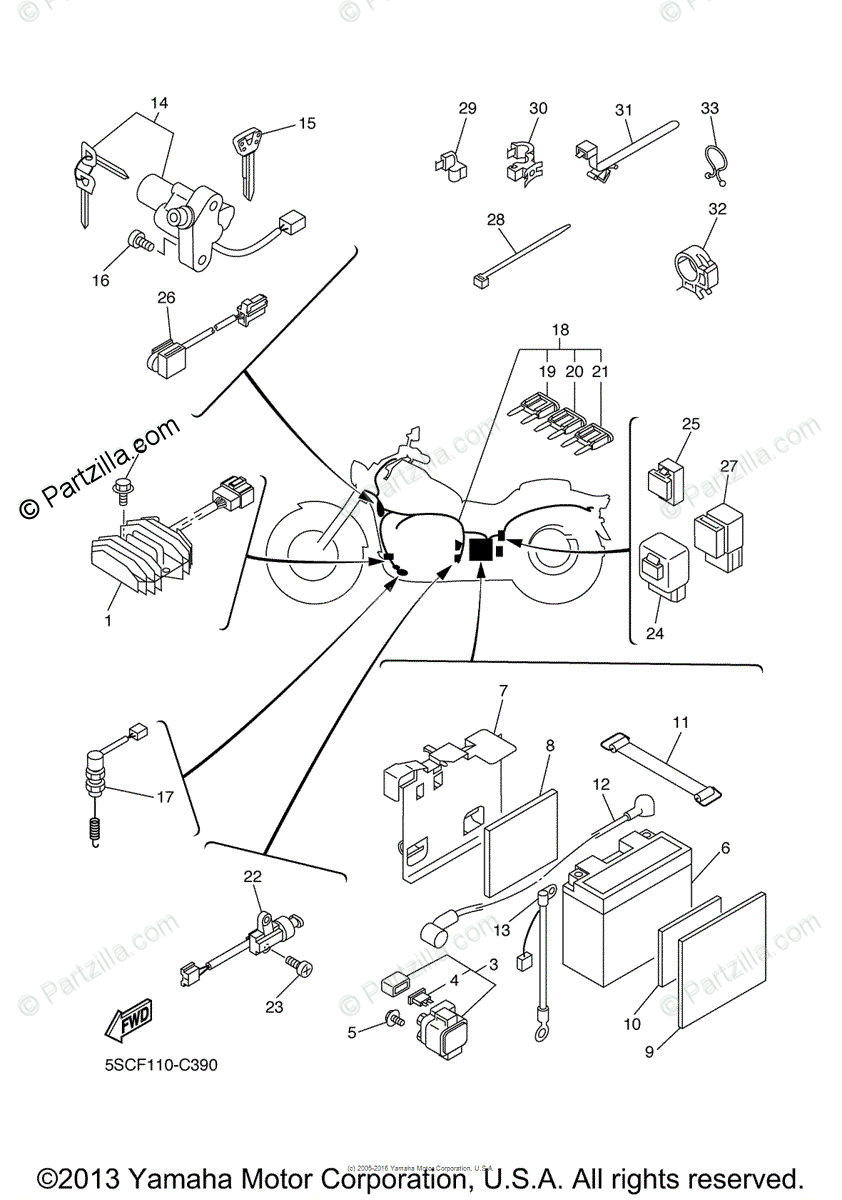

We will be adding a full master cylinder repair kit in the near future. We stock a variety of rubber boots, diaphragms and spacers that can help you restore your existing master cylinders. We have numerous parts that will help you restore your meters, from rubber dampers for tacho and speedo cables, lever covers, socket assembly cables and light bulbs. We also have footrest dampers, stand stopper, tension spring and various nuts and bolts in stock. If exposed to element, footrest rubbers crack, we therefore stock front & rear footrest rubbers, gear lever as well as kick-start rubber. We also stock new outer and inner seals for your fuel tank cap. You want to keep it well protected and insulated from the frame. Regardless of size or shape, your fuel tank will certainly need new dampers over time. In our dedicated category, you can find OEM parts as well as aftermarket parts and our own quality reproductions. We now stock over 120 essential XS650 parts required for your restoration project. We understand that especially rubber parts and seals disintegrate over time. The price of the original models was reasonable and Yamaha XS650 parts were and some of them still are easily accessible. On our website you can therefore find a variety of XS650 spare parts for your favourite XS650 café racer, XS650 bobber, XS650 Chopper or even parts for custom street trackers. Nowadays, it is one of the most widely customized motorcycle models ever. The XS 650 is a bike with personality, it could be tweaked and modified to almost any style you could imagine. The legendary XS series motorcycles were discontinued in 1985 to make way for the new XJ models. In the United States, the production continued way into mid 1980s with Heritage Special models. Models after 1979 used electronic ignition system. All XS models up to 1979 used points ignition, with two sets of points located on the upper left of the cylinder head. In 1972 XS motorcycles had an additional electric start fitted with optional kickstart should the battery fail. Braking systems on the XS motorcycles kept changing from drum brakes to disc brakes and back to drum as time went by, so did the wheel style. The Specials had smaller gas tanks, wider steadier tires, stepped seat, aluminium grab rails and many other new features. There were several modifications in design and well as performance of the two, but the basic 650cc engine remained. The E & F models were the last standard "café racer" models, the hunger for a cruiser model just took over and production had to adapt.īorn in 1978 as Yamaha XS 650 SE, the first “Special Edition” cruiser model was born. New front forks were introduced on the 1977 XS650D model, going from 34mm to 35mm in diameter.

This bike had disc brake on front and drum brakes on rear wheels and a new - more solid - frame to tackle the handling issues.
79 yamaha xs650 carburetor diagram series#
Putting aside the 1974 TX650A (first of the XS models confusingly marketer under TX), the XS650B was the first of the “Standard” series produced by Yamaha until 1979. Despite the handling issues, it was a great bike, it quickly became popular for its reliability, easy maintenance and the leak-proof crankcase. The four-stroke engine was designed to mimic the two-stroke design, with two pistons rising and falling together. The disadvantage of such configuration was engine vibration at higher speed and tendency to wobble. This motorcycle classic had a narrow and tall engine, giving the motorcycle a slim profile, it was fairly lightweight due to the two-stroke frame the engine was mounted onto and fairly easy to manoeuvre. Yamaha XS1/XS1B/XS2 which could be considered the XS650A were ideal stepping stones for people riding two-stroke 250cc or 350cc. Various bearings are used throughout, four ball bearings in the camshaft and roller bearings are used throughout the rest of the engine, connecting rods turn on needle bearings.Īfter an initial hiccup by Yamaha with the name changing from XS to TX and back in the early 1970s, the 1975 Yamaha XS 650 was born. The XS650 engine was equipped with valves that were operated by a single overhead camshaft (SOHC).

It had a parallel twin air cooled engine and gearbox in a unit construction with crankcase split horizontally. The first model, on which the whole series is based, was the legendary Yamaha XS1 650cc. When the first XS650 model was launched in 1968 at the Tokyo Motorshow, no one could predict that it will be one of the bestselling Japanese bikes.


 0 kommentar(er)
0 kommentar(er)
